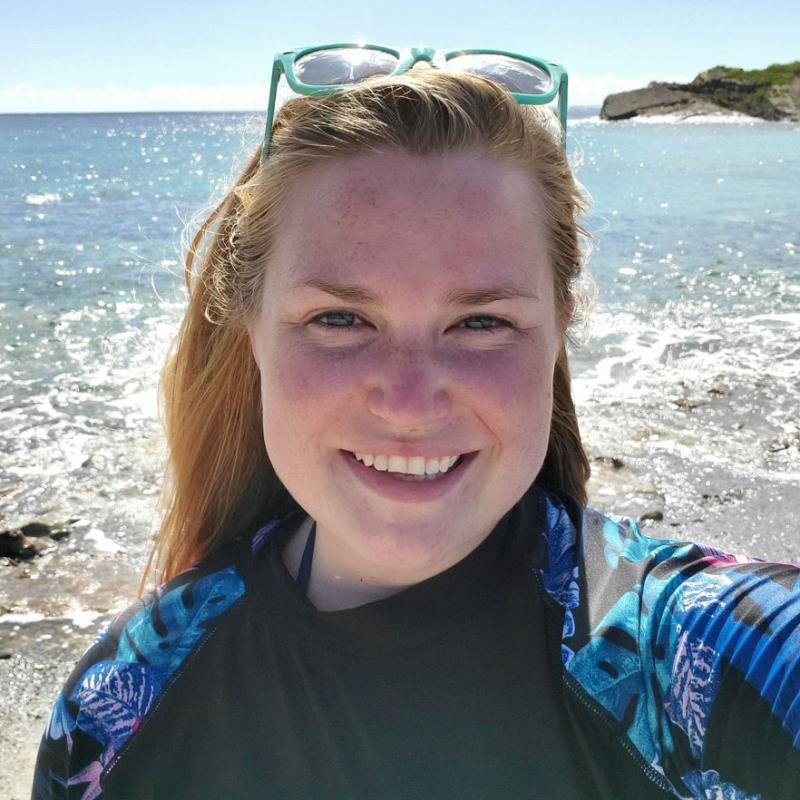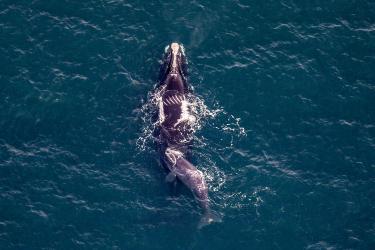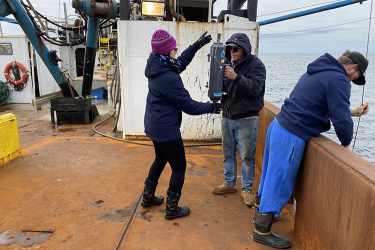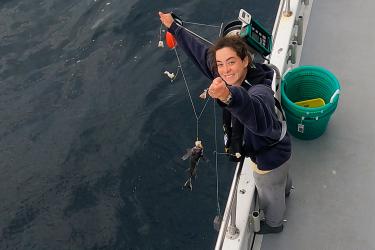This season’s Gulf of Maine Bottom Longline Survey started off feeling a bit different than previous years. We had prepped all the gear two weeks before sailing, so there wasn’t the usual mad dash to set up. The weather was unseasonably warm. I often found myself working out on deck in just a t-shirt in mid-to-late October. We started working the closer-to-shore stations in the western Gulf of Maine first and did the farther easternmost ones last. We usually try to avoid this because it takes longer to get to the farthest stations and the “good weather” window for sailing starts to shrink later in the fall. Everything just seemed a bit backwards. That didn’t stop it from being one of the most interesting surveys I’ve worked on yet. Below are some of my highlights.
Weird and Wonderful Fish
Having seen most of the fish in the Gulf of Maine, catching a golden tilefish was a first for me! It was also a first for the crew of the F/V Mary Elizabeth and everybody was thrilled. It is a beautiful fish, with a massive head and bright yellow spots all over its body.
Another highlight for me was catching the biggest Atlantic cod I’ve ever seen. While they can get much bigger, this female was still quite large (I’m 5 feet 4 inches for reference). Look at its head in comparison to my own! Another interesting catch was a peculiar looking haddock. I don’t really like haddock but was quite enamored with this one. Why? Because, like me, it had a cataract in its left eye. Who knew I would find a kindred spirit in a fish?
Feathered Friends
I am a self-proclaimed bird nerd. In between hauls you might find me outside snapping pictures of seabirds and any land birds that seek refuge on the vessel. This time around I basked in the presence of a golden-crowned kinglet—a bird I’ve only seen once before.
I also managed to snap numerous Northern fulmar pictures, something I do every time I’m at sea. My camera is flooded with fulmar pictures because they are so beautiful—it’s like they have built-in eyeliner. Plus, I was lucky enough to spot a dark morph with gray plumage instead of the usual white.
Large Visitors
Charismatic megafauna—called so because you can’t help but be enamored with them. Their size and their curious nature have captured the hearts of many, including myself. All of us on the survey, scientists and fishermen, were quite taken with the pilot whale and bottlenose dolphin pods that visited us. I also may have snorted when I realized I photographed a dolphin looking like a hovercraft.
Big White Ships
We usually don’t see any other vessels where we fish. This time we were close to two very large white ships. The first was the NOAA Ship Pisces, one of the larger survey vessels, conducting research on harmful algal blooms.
The other was a bit more unexpected—a U.S. Coast Guard ship. Some of its crew hopped in a smaller vessel and beelined right for us. They boarded our vessel to perform a routine safety inspection. We were worried the boarding might take a long time and impact our time-sensitive survey gear fishing protocols, but it was a friendly and speedy encounter.
While the survey may have started warm, it finished with a cold snap. We returned from the last trip to find frost on the dock. As exciting as this survey was, I was glad it ended when it did. It’s now time to wrap myself in a blanket cocoon all winter and emerge just in time for the spring survey.












